|
|
|
Introduction |
Secluded Place |
Scrape | Mound | Burrow | Cavity | Plate |
Platform |
Pendant | Sphere |
Cup |
Host | |
Cup-shaped Nests
A lot of
passerines and some non-passerines build cup-shaped nests from
pliable material like grasses that provide a well-shaped, well
insulated nest to facilitate incubation.
|
|
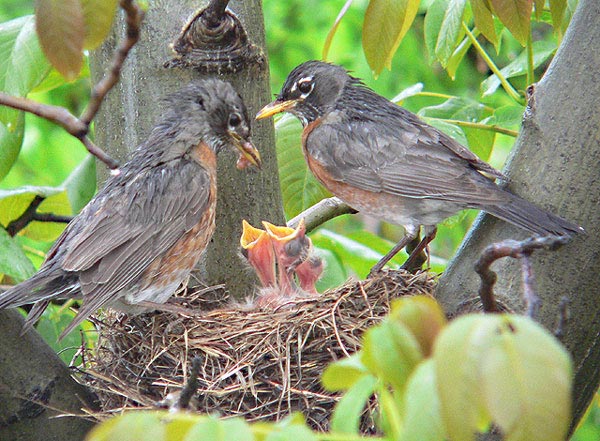 American
Robins build their nests in a great variety of, usually
sheltered, locations with well supported foundations, like the
forks of trees, roof gutters, rail fences, porch gables and the
like. The nest is a deep tidy cup of mud and grasses with
finer materials for the lining. American
Robins build their nests in a great variety of, usually
sheltered, locations with well supported foundations, like the
forks of trees, roof gutters, rail fences, porch gables and the
like. The nest is a deep tidy cup of mud and grasses with
finer materials for the lining.
The 3 to 6 (usually
4) pastel blue eggs are incubated almost completely by the female
for 12 to14 days. There are usually two, but sometimes three
broods a year. |
Nesting Robins by
Terry Saddler İTerry
Sadler
|
|
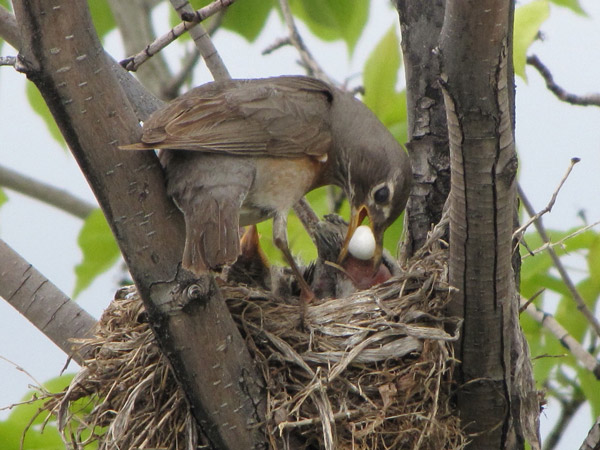 Ted
Fitzgerald took a series of picture for a little more than a
month, documenting the nesting activities of a pair of American
Robins including the phenomenon of the "fecal Sack."
This
is worth checking out. Ted
Fitzgerald took a series of picture for a little more than a
month, documenting the nesting activities of a pair of American
Robins including the phenomenon of the "fecal Sack."
This
is worth checking out. |
The Fecal Sack Phenomenon, by Ted
Fitzgerald
İTed V. Fitzgerald
|
|
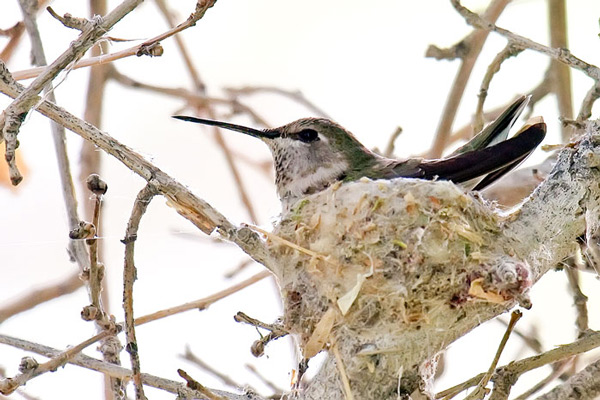 Black-chinned
Hummingbird nests are about 1 1/2 inches wide and 1 inch high,
which, small though they might be, provide enough room for 2 and
sometimes 3 chicks. These nests are made of plant down with
an outside coat of spider "silk." Black-chinned
Hummingbird nests are about 1 1/2 inches wide and 1 inch high,
which, small though they might be, provide enough room for 2 and
sometimes 3 chicks. These nests are made of plant down with
an outside coat of spider "silk."
The eggs are
incubated by the female for about 16 days and the young leave the nest
about 20 days after hatching, but are still fed by the female for
a time. Two and sometimes 3 broods are produced over the
summer. |
Black-chinned Hummingbird, by
Kendall Brown
İKendall W. Brown
|
|
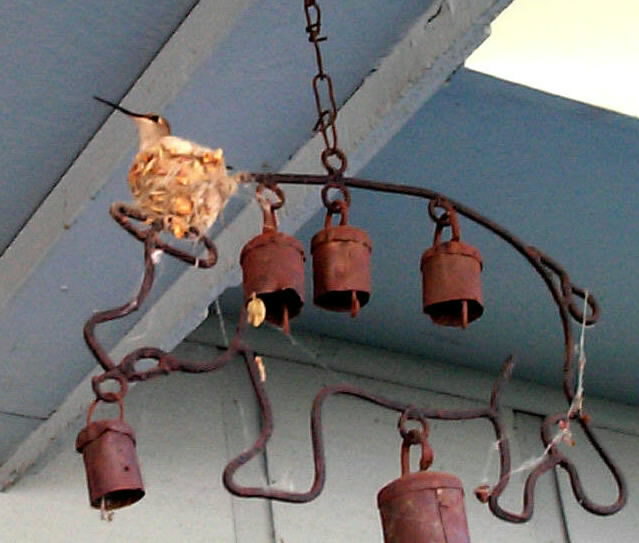 Although
Black-chinned Hummingbird nests are usually nestled in
forking branches of a tree or bush 4 to 8 feet up, sometimes they
are built on a Christmas wreath left on a door or on a hanging
ornament on someone's porch, as we see from this photo taken on
Christian Peay's porch in Orem, Utah. Although
Black-chinned Hummingbird nests are usually nestled in
forking branches of a tree or bush 4 to 8 feet up, sometimes they
are built on a Christmas wreath left on a door or on a hanging
ornament on someone's porch, as we see from this photo taken on
Christian Peay's porch in Orem, Utah. |
Front Porch Nest, by Christian
Peay
İChristian Peay
|
|
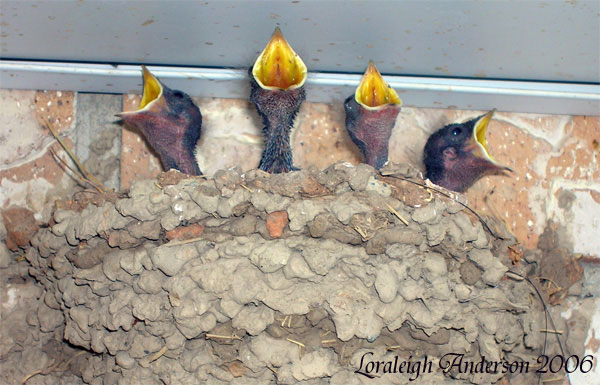 Barn
Swallows create cup-shaped nests from mud or clay pellets with
straws and grasses mixed in and usually lined with poultry
feathers, horsehair, a process that takes 1 or 2 weeks.
Colonies of swallows (usually less than 30) will sometimes paste
there nests on barn walls or other structures, but often they nest
as a single pair. Barn
Swallows create cup-shaped nests from mud or clay pellets with
straws and grasses mixed in and usually lined with poultry
feathers, horsehair, a process that takes 1 or 2 weeks.
Colonies of swallows (usually less than 30) will sometimes paste
there nests on barn walls or other structures, but often they nest
as a single pair.
|
Barn Swallow Breakfast, by Ryan
Houston
İRyan Houston
|
|
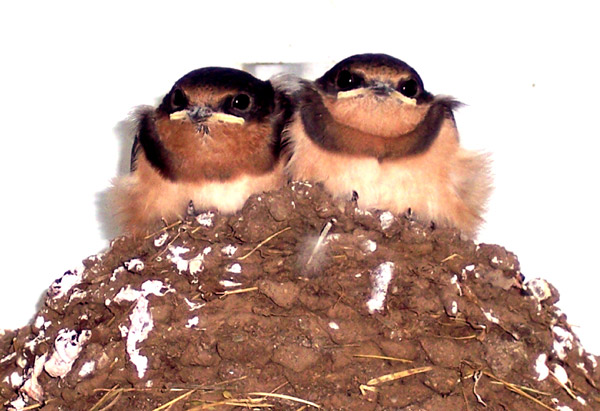 Four or 5 eggs are incubated 13 to 17 day and the
young fly 18 to 23 days after hatching. Four or 5 eggs are incubated 13 to 17 day and the
young fly 18 to 23 days after hatching. |
|
Growing Barn Swallow, by Ryan Houston
İRyan
Houston |
|
|